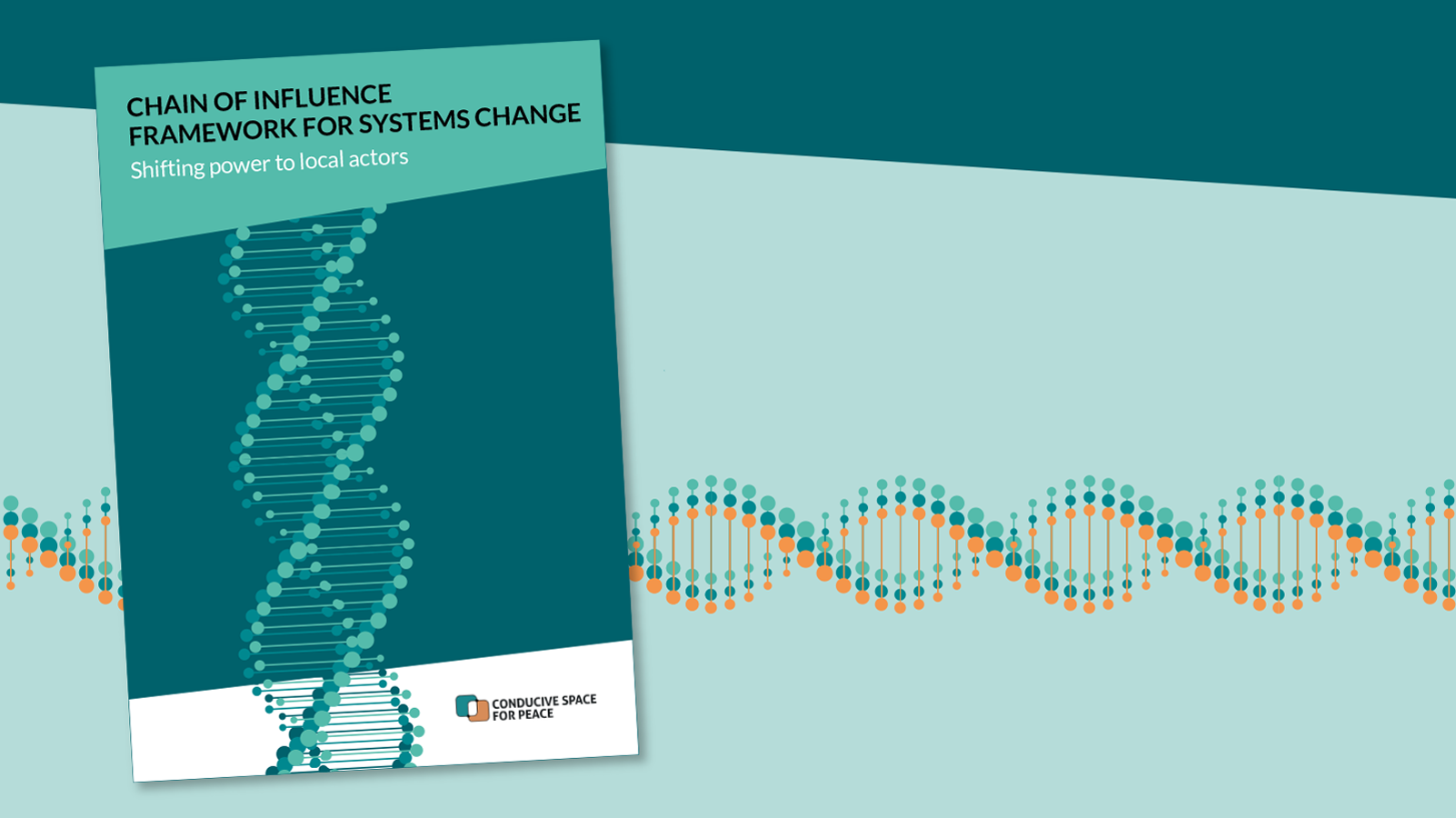Shifting Power to Local Peace Actors
The role of local actors is highly important for sustainable peace. Our partner organization Conducive Space for Peace studies and promotes the systemic change towards local peacebuilding.
Systems change towards locally-led peacebuilding, stabilization and decolonization are increasingly on the forefront of the agenda of international organizations working in the humanitarian-development-peace nexus. Yet, the international aid system is not supporting local actors sufficiently, while many people working for international organizations feel unable to change the ways of working in creating an enabling environment for local actors.
The Chain of Influence Framework zooms into the interlinkages between ways of working at one level of the system with ways of working at another level of the system, and how this impacts support to local actors who should be at the core of peacebuilding efforts to promote sustainable peace. It offers a way of tracing the complex journey of funding, power and influence across the levels of the development and peacebuilding system from bilateral donors to United Nations organizations and INGOs and on to national and local civil society actors. The Chain of Influence Framework depicts the kind of systems change needed overall and in different parts of the global peacebuilding system, and thus can guide a scenario development process that is designed bottom up.
Peacebuilding as an example
How could the Framework be utilized to strengthen international organizations in their efforts to support locally led peacebuilding? If seeking radical and sustainable change of the system for creating conducive space for locally-led peacebuilding, the Chain of Influence Framework must be turned upside down. Then, the needs of local actors become the foundation for international systems change (see figure below).
Reversing the chains offers several ways for international organizations to contribute to a more effective and enabling system to emerge. From the perspective of a foundation, one avenue can be to take on broader processes – e.g., around diversity, equality and inclusion – of organizational change mandated by its leadership. As a consequence, this may lead to a rethinking of behaviors and policies on the next level of society, the political constituencies. Internal change processes that consistently support such change are challenging and require profound and organization-wide change in structures, practices and norms. For this to happen, it is important that top-level management understand the logic and need for systems change as well as taking on board organizational development managers in designing change processes that are based on the needs of local actors.
Reversing the Chains of Influence
The figure used to visualize the logic of the Chain of Influence Framework is inspired by DNA. DNA is the basic component of any form of life. The systems design of DNA is both a source of replication and rigidity, as well as a source of growth and development. The molecules in DNA are tightly knit together, making their trajectory of replication difficult to change. They divide into new DNA structures that have the same characteristics as the original strand. The international aid system is equally tightly knit and is replicated within and between its organizations through chains of influence. It takes multiple trajectories to reach local actors, with a significant number of intermediaries embedded in the chains.
The colors used in the visual DNA-inspired Chain of Influence Framework shifts from blue to green to yellow and then to orange. The color blue symbolizes the power and technocracy of international organizations, while the color orange symbolizes the human potential of local actors in contributing to sustainable peace. In this figure, the directionality of power is illustrated by the reversal color coding.
Find out more on this topic
Read Conducive Space for Peace’ (CSP) full report:
„Chain of Influence Framework for Systems Change – Shifting the power to local actors”
…and listen to the recent podcast:
Enabling international organisations to better support local leadership

